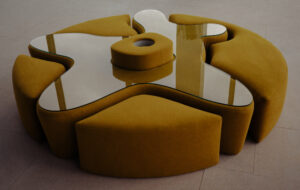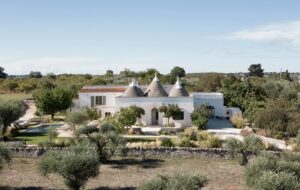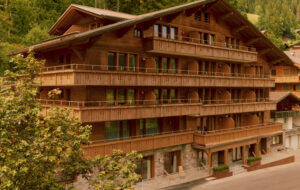|
|
||
|
Johan Celsing’s crematorium for a UNESCO-listed cemetery in Stockholm is a delicate balance of technical and emotional demands Skogskyrkogården, or the Woodland Cemetery, is a UNESCO World Heritage Site in the suburbs of Stockholm, famous for its seminal works by 20th-century architects Gunnar Asplund and Sigurd Lewerentz. In recent years it had become clear that the facilities needed modernising, but the cultural significance of the buildings – ranging from the “primitive hut” of Asplund’s wooden chapel (1920) to his much-celebrated crematorium with its abstracted portico (1940) – rendered extensive refurbishment inappropriate. Instead, a competition was held for a brand new crematorium, with a number of global architects such as BIG and Caruso St John making it to the final stage, jostling for a chance to add to one of the most celebrated architectural ensembles in the world. In the end, the competition was won by Swedish architect Johan Celsing, and his low, muted brick creation opened last year. “You know,” says Celsing, “being the local architect, you have certain knowledge about the client and the site, which helps.” He’s being self-effacing, as it was not home advantage, rather the sophisticated and compact planning, that set his project apart. The building is mostly single storey, and almost a perfect square in plan. Mourners arrive on a pathway laid with granite – an extension of Lewerentz’s sophisticated landscaping – before gathering under an angled porch set on sturdy rectangular pillars, where a single, circular granite column gives a nod back towards Asplund’s chapel.
A perforated white wall draws light into the ceremony room The interior is split by the two very different aspects of the building experienced by mourners and staff. Entering from the porch, the former are received into a ceremony room with a vaulted ceiling and a hidden rooflight, which create an intimate and dignified space. But these public zones only take up a very small amount of the building’s total area; the rest is dedicated to the small staff and their technical tasks. The hearse arrives at the opposite side to the mourners, from where a secondary route passes through cold-storage rooms to the furnaces, all of which connect back to the public spaces where necessary. Indeed, a huge copper door from the incinerator faces the gathering porch – a symbolic rather than purely practical connection between the different realms of activity. The staff facilities are served off a corridor surrounding a small courtyard, almost like a cloister, which provides a calm space for the team when they are not immediately occupied. “The client said that the staff must have ‘a dignified working environment’,” says Celsing, discussing the technical and emotional demands of the building. “Balancing these frequently contrasting issues was a very important part of the design work,” he adds. “It combines the practical with a sense of gravity.” A soft, white concrete is the main material for the interiors, well cast but with seams left unfinished to provide “a subtle but palpable indication of how the building was constructed”, as Celsing puts it. This is interspersed in places with perforated white brick and softwood furnishings, and the effect is suitably austere and dignified. The exterior, whose profile rises and falls with the terrain, is clad with small, thin bricks, which wrap across the floors, walls, roof and soffits. “The relevance of the brick is to merge with the rough bark of the pines,” explains Celsing, referring to the century-old forest that provides the setting for the entire cemetery. “But it is also to tone the building down, to calm it, so it is not too heavy.” The new building may have a lot to live up to, but Celsing doesn’t seem too flustered by the weight of precedent. “We didn’t strive to be pretty for the World Heritage Site, we strove to give the building the best possible quality – if it fits in with its surroundings then that’s great.” |
Words Douglas Murphy
Above: The interior concrete walls have been left unfinished
Images: Ioana Marinescu |
|
|
||
|
The interior concrete walls have been left unfinished |
||




















